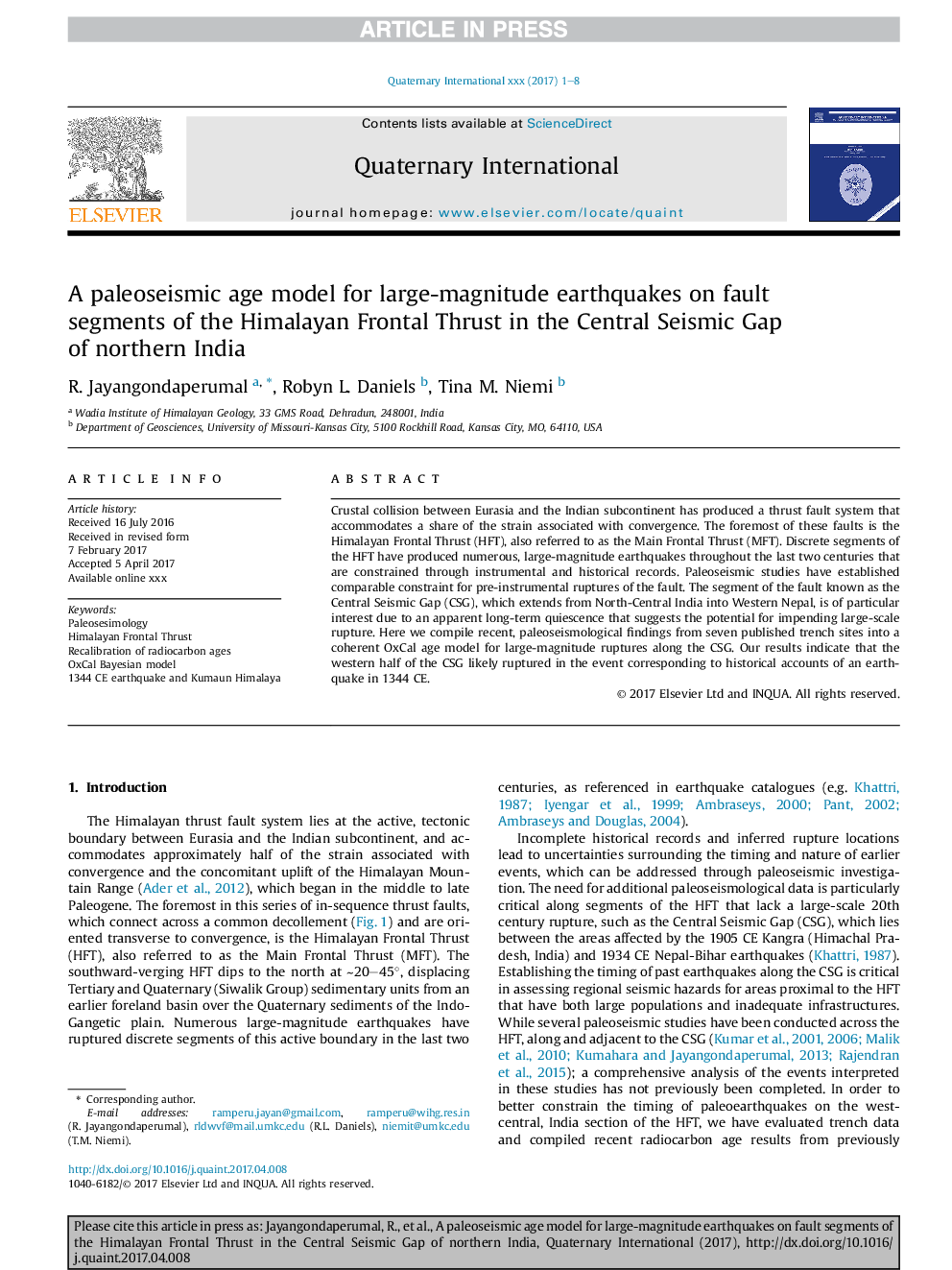| کد مقاله | کد نشریه | سال انتشار | مقاله انگلیسی | نسخه تمام متن |
|---|---|---|---|---|
| 7451102 | 1484061 | 2017 | 8 صفحه PDF | دانلود رایگان |
عنوان انگلیسی مقاله ISI
A paleoseismic age model for large-magnitude earthquakes on fault segments of the Himalayan Frontal Thrust in the Central Seismic Gap of northern India
ترجمه فارسی عنوان
یک مدل سنسور پائئوسئومیکس برای زلزله های بزرگ در بخش های گشت زاویه محور هیمالیا در ناحیه لرزه ای مرکزی شمال هند
دانلود مقاله + سفارش ترجمه
دانلود مقاله ISI انگلیسی
رایگان برای ایرانیان
موضوعات مرتبط
مهندسی و علوم پایه
علوم زمین و سیارات
زمین شناسی
چکیده انگلیسی
Crustal collision between Eurasia and the Indian subcontinent has produced a thrust fault system that accommodates a share of the strain associated with convergence. The foremost of these faults is the Himalayan Frontal Thrust (HFT), also referred to as the Main Frontal Thrust (MFT). Discrete segments of the HFT have produced numerous, large-magnitude earthquakes throughout the last two centuries that are constrained through instrumental and historical records. Paleoseismic studies have established comparable constraint for pre-instrumental ruptures of the fault. The segment of the fault known as the Central Seismic Gap (CSG), which extends from North-Central India into Western Nepal, is of particular interest due to an apparent long-term quiescence that suggests the potential for impending large-scale rupture. Here we compile recent, paleoseismological findings from seven published trench sites into a coherent OxCal age model for large-magnitude ruptures along the CSG. Our results indicate that the western half of the CSG likely ruptured in the event corresponding to historical accounts of an earthquake in 1344 CE.
ناشر
Database: Elsevier - ScienceDirect (ساینس دایرکت)
Journal: Quaternary International - Volume 462, 30 December 2017, Pages 130-137
Journal: Quaternary International - Volume 462, 30 December 2017, Pages 130-137
نویسندگان
R. Jayangondaperumal, Robyn L. Daniels, Tina M. Niemi,
